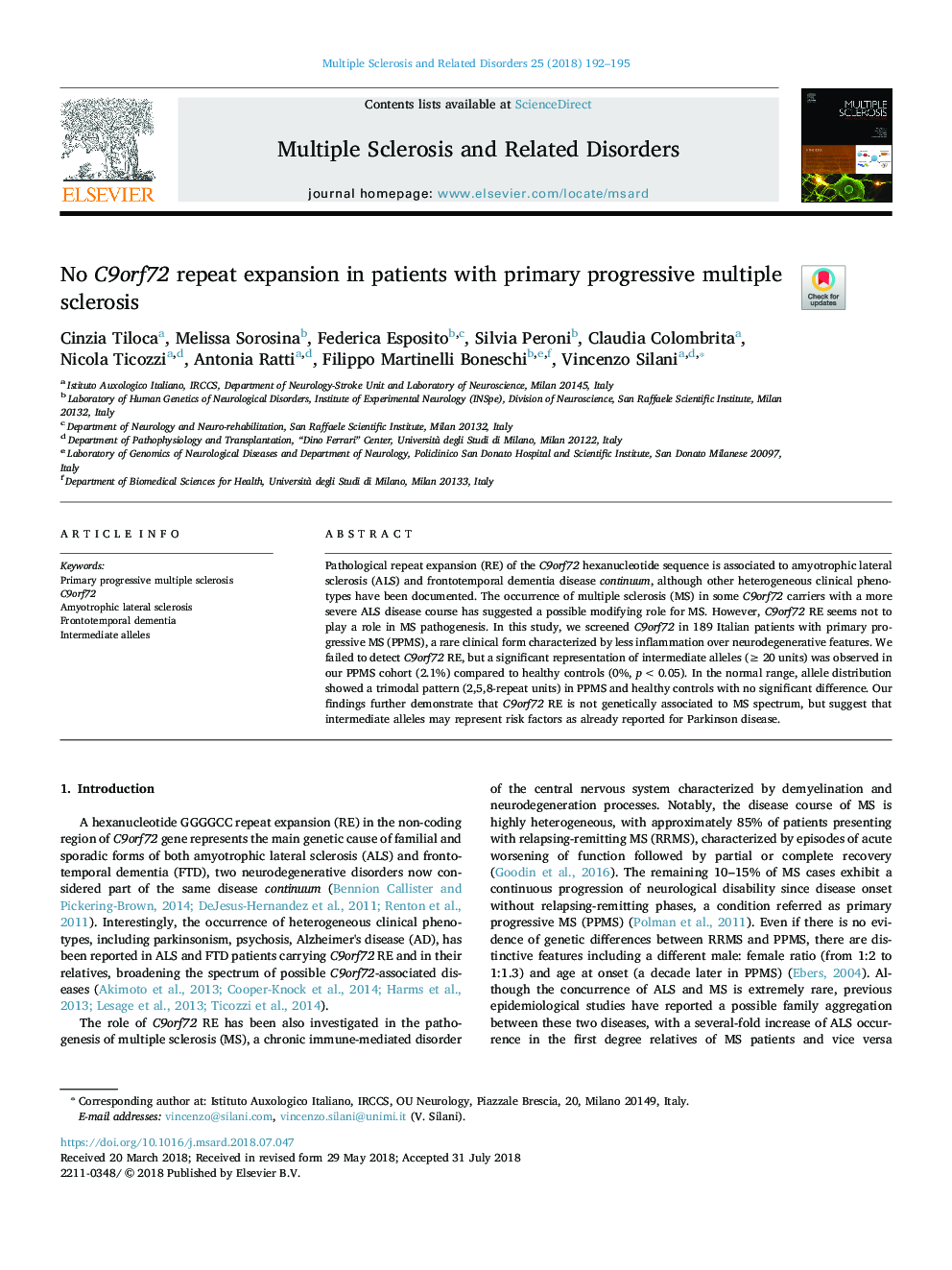| Article ID | Journal | Published Year | Pages | File Type |
|---|---|---|---|---|
| 8647224 | Multiple Sclerosis and Related Disorders | 2018 | 4 Pages |
Abstract
Pathological repeat expansion (RE) of the C9orf72 hexanucleotide sequence is associated to amyotrophic lateral sclerosis (ALS) and frontotemporal dementia disease continuum, although other heterogeneous clinical phenotypes have been documented. The occurrence of multiple sclerosis (MS) in some C9orf72 carriers with a more severe ALS disease course has suggested a possible modifying role for MS. However, C9orf72 RE seems not to play a role in MS pathogenesis. In this study, we screened C9orf72 in 189 Italian patients with primary progressive MS (PPMS), a rare clinical form characterized by less inflammation over neurodegenerative features. We failed to detect C9orf72 RE, but a significant representation of intermediate alleles (â¥â¯20 units) was observed in our PPMS cohort (2.1%) compared to healthy controls (0%, pâ¯<â¯0.05). In the normal range, allele distribution showed a trimodal pattern (2,5,8-repeat units) in PPMS and healthy controls with no significant difference. Our findings further demonstrate that C9orf72 RE is not genetically associated to MS spectrum, but suggest that intermediate alleles may represent risk factors as already reported for Parkinson disease.
Keywords
Related Topics
Life Sciences
Biochemistry, Genetics and Molecular Biology
Genetics
Authors
Cinzia Tiloca, Melissa Sorosina, Federica Esposito, Silvia Peroni, Claudia Colombrita, Nicola Ticozzi, Antonia Ratti, Filippo Martinelli Boneschi, Vincenzo Silani,
